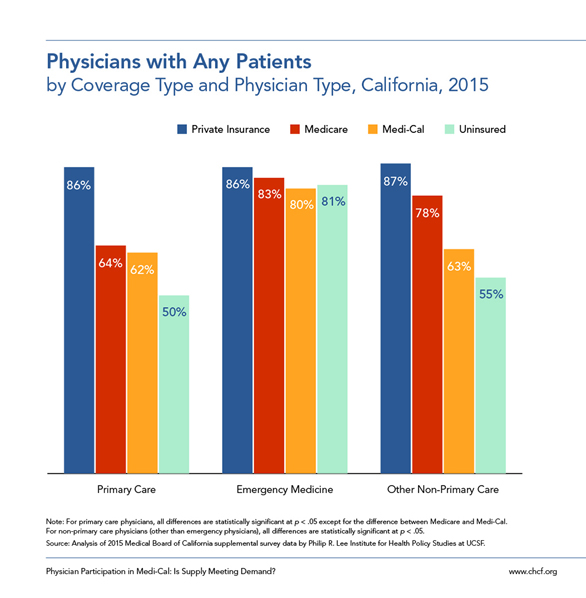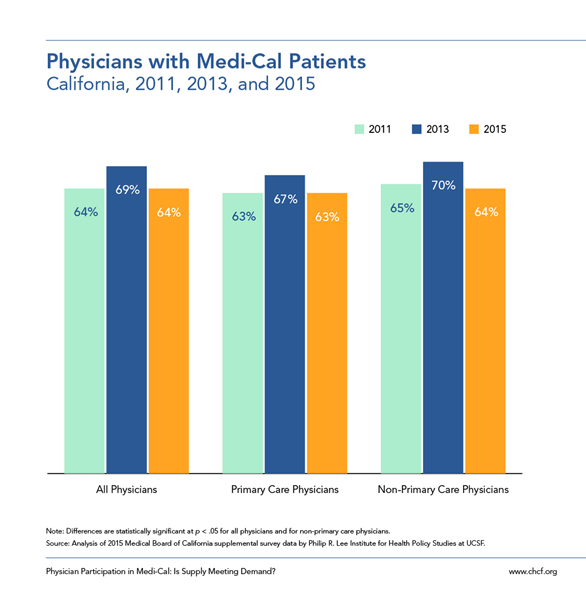Enrollment in Medi-Cal, California's Medicaid program, surged with the implementation of the Affordable Care Act (ACA), from 8.6 million in September 2013 to 13.4 million three years later. Medi-Cal now covers nearly one in three Californians. These Medi-Cal enrollees benefit from no- or low-cost coverage for a wide array of physical health, mental health, and long-term care services, when needed. They also benefit from many legal and other protections not available to uninsured patients, including federal "equal access" standards for Medicaid and, for those enrolled in managed care, network adequacy requirements. For some of these protections to work, an adequate number of physicians must serve Medi-Cal enrollees. Physician Participation in Medi-Cal: Is Supply Meeting Demand? summarizes a study conducted by the University of California, San Francisco, that evaluated physician participation in Medi-Cal between 2013 and 2015.
Key findings:
- Primary care physicians in California were more likely to serve Medi-Cal patients than uninsured patients, but less likely to have Medi-Cal patients in their practices than patients with private health insurance.
- Non-primary care physicians were more likely to serve Medi-Cal patients than uninsured patients, but less likely to have Medi-Cal patients in their practices than patients with either Medicare or private insurance.

- Rates at which physicians accept new Medi-Cal patients and uninsured patients varied across specialties, practice settings, and regions.
- From 2013 to 2015 the percentage of California physicians serving Medi-Cal patients decreased from 69% to 64%, but the overall number of full-time equivalent (FTE) physicians serving Medi-Cal patients increased by 9%. This is probably because, among physicians serving Medi-Cal patients in 2015, the overall share of their patients on Medi-Cal increased (many patients who had been uninsured in 2013 were covered by Medi-Cal in 2015).

